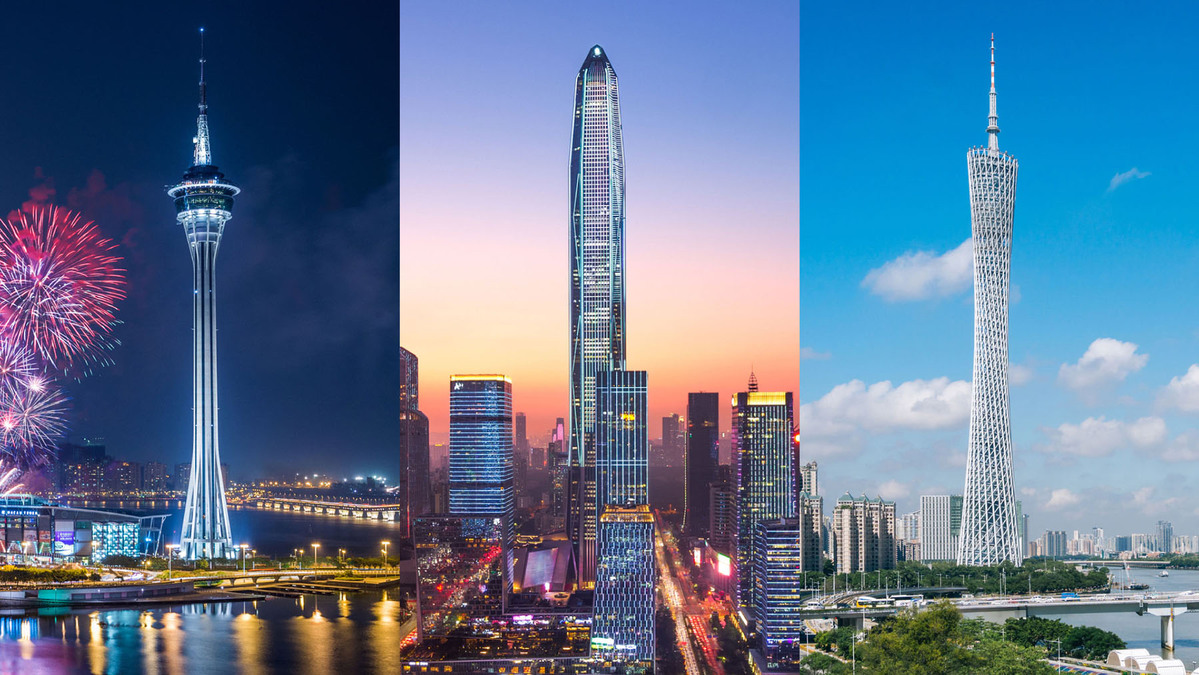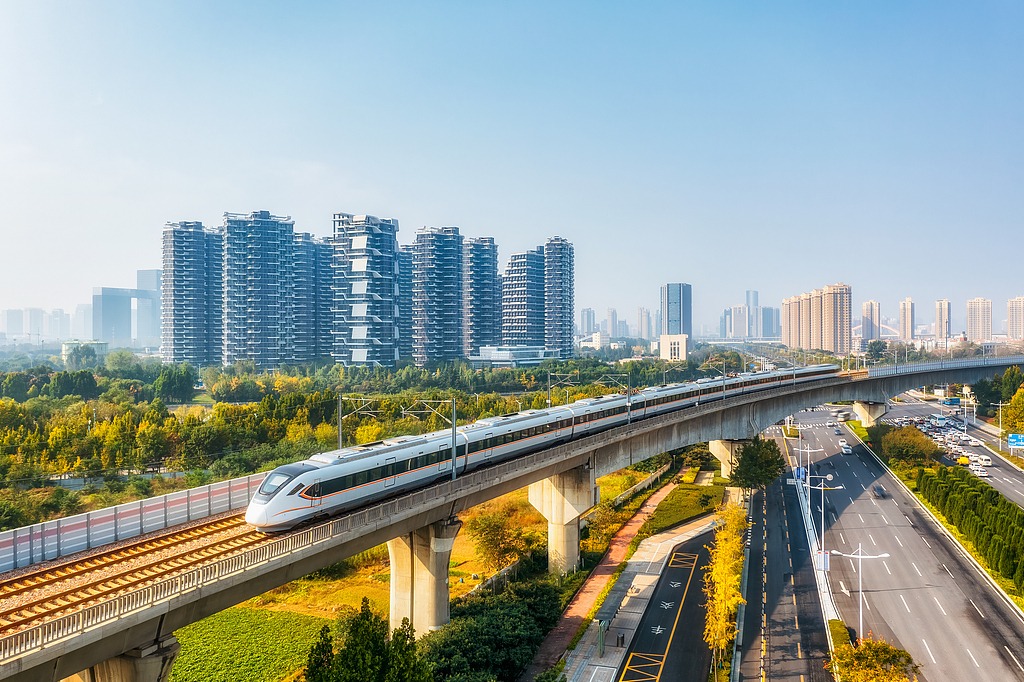Integrated communities


On weekend mornings, long lines of commuters would snake their way to the B7 bus stop near the Fanling Mass Transit Railway station in Hong Kong's northern New Territories. The bus would take them to Heung Yuen Wai port, where they would cross into Shenzhen.
It's the same story on the other side of the border, with Chinese mainland tour groups lining up at Shenzhen's Liantang port to enter the Hong Kong Special Administrative Region.
The scenes reflect the deepening integration of the Guangdong-Hong Kong-Macao Greater Bay Area - an 11-city cluster spanning 56,000 square kilometers and home to more than 87 million people that generated a GDP exceeding 14 trillion yuan ($1.95 trillion) last year. The region's rapid blending, driven by increased cross-border travel, spending and healthcare demand, underscores a thriving regional economy.
Heung Yuen Wai port - Hong Kong's seventh land crossing with the mainland - was initially designed to handle 30,000 passenger trips daily. The port exceeded its capacity just a month after it opened to passengers on Feb 6, 2023, with the number of daily crossings hitting 32,000 on March 11, 2023, before reaching a high of 110,000 on March 16 this year - nearly quadruple its projected capacity.
On June 21, outbound passenger trips reached 54,744, with nearly 90 percent of them made by mainland-bound Hong Kong residents - the second-highest daily departure volume since Heung Yuen Wai port launched passenger services.
The surge in cross-border travel has created a boom for businesses, particularly retail. At Liantang Port Commercial City, a shopping mall adjacent to the Liantang crossing, a restaurant specializing in serving Cantonese siu mei - marinated meat roasted on a spit - reported selling more than 10 pigs and 20 geese daily, generating about 50,000 yuan in revenue, with 90 percent of the customers being from Hong Kong.
Residents aged 60 and above in Hong Kong can travel to Liantang port for as low as HK$2 (25 US cents) by bus. On arrival in Shenzhen, they can take the subway for free under the city's free subway travel initiative for the elderly, regardless of their household registration.
Huanggang port, currently undergoing reconstruction, is expected to reopen next year with a capacity for 200,000 daily crossings. It will introduce a "co-location" immigration system similar to that adopted at the Hong Kong West Kowloon Station of the high-speed rail, allowing travelers to complete immigration and customs clearance for both the mainland and the HKSAR at the same location, instead of conducting the process separately on either side of the border as is currently required.
Shenzhen Bay port expanded its reach in December, linking up with Shenzhen subway's Line 13, adding to transit options for commuters.
Hong Kong residents' robust consumption power has prompted Shenzhen to adopt further measures to boost travel. The city's iconic Dongmen shopping area, near Lo Wu port in Hong Kong, launched an instant tax refund service in June 2024, enabling tourists to get refunds immediately after purchases.
Hong Kong people made 104.7 million trips outside the city last year - up 45 percent from 2023 - with nearly 82 million trips to mainland destinations.
March, August and from October to December are peak travel months, with each registering more than 7 million trips to the mainland.
While cities in the Greater Bay Area remain primary destinations for Hong Kong residents, second- and third-tier cities in Guangdong province, as well as cities further north, like Chongqing municipality and Changsha in Hunan province, are gaining popularity.
Greater convenience
Since June 2024, overnight high-speed rail sleeper trains have linked Hong Kong with Beijing and Shanghai. On Oct 1, 2024, two sleeper trains were upgraded, with optimized stops along the route to reduce travel time.
Airlines are also adapting to growing travel demand. HK Express will launch direct flights to Guiyang, the capital of Guizhou province, this month.
HK Express CEO Jeanette Mao said one out of four of their passengers is from the Greater Bay Area. In the first five months of this year, the number of passengers from the mainland cities of the cluster rose by more than 50 percent year-on-year, surpassing that of other regions.
Released in mid-June, research conducted by the Chinese University of Hong Kong shows that the service industry accounts for up to 47 percent of the total spending of AlipayHK users on the mainland, while the retail and catering sectors make up 28 percent and 16 percent respectively.
Digital payment systems are keeping apace, with AlipayHK offering discounts for mainland shopping and fee-free transaction services for Hong Kong dollars. From March 24 through Sunday, visitors using the mainland's Alipay to board Hong Kong's East Rail Line through Lo Wu or Lok Ma Chau stations can enjoy a 20 percent discount on normal fares.
A milestone was reached in June with the launch of Payment Connect - a cross-border service jointly operated by the People's Bank of China and the Hong Kong Monetary Authority. It links Hong Kong's Faster Payment System with the mainland's Internet Banking Payment System, and allows FPS users to transfer up to HK$10,000 a day per account to the mainland, with an annual cap set at HK$200,000. Initially, the service is free of charge.
Affordable and efficient mainland healthcare is another major draw for Hong Kong residents. The Elderly Health Care Voucher Greater Bay Area Pilot Scheme now covers 15 service points, benefiting more than 1.78 million eligible Hong Kong seniors.
Since November 2020, Hong Kong residents living and working in the mainland cities of the Greater Bay Area with urgent clinical needs can visit designated healthcare institutions to use Hong Kong-registered drugs and medical devices utilized in Hong Kong public hospitals, subject tothe approval of Guangdong authorities. The move was made under the work plan for regulatory innovation and development of pharmaceutical and medical devices in the Greater Bay Area announced by the National Medical Products Administration - the country's regulatory body for drugs and medical products.
The University of Hong Kong-Shenzhen Hospital has introduced 32 types of pharmaceuticals and 18 different medical devices as of May, benefiting over 6,000 people who have received timely medical treatment under the policy initiative.
The hospital told China Daily the number of outpatient visits by Hong Kong patients last year had surged by 90 percent year-on-year, along with a 91 percent growth in the number of inpatient visits. Between January and May, there was a 41.68 percent year-on-year increase in outpatient visits and a 53.77 percent rise in inpatient visits by Hong Kong patients.
At New Frontier United Family Hospital - a private medical institution in Shenzhen - Hong Kong patients account for 30 percent of its total patients, with the number of visits having tripled from May 2024 to May this year. It has so far recorded about 17,000 visits from Hong Kong patients annually.





































